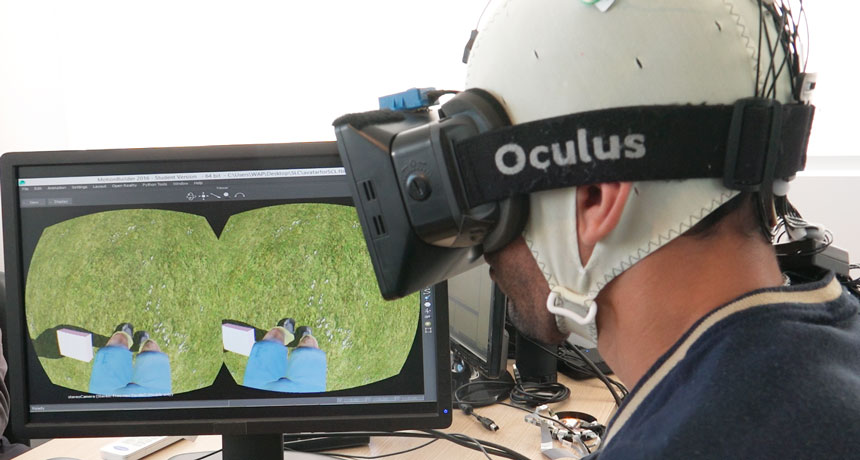SaeboVR increases mobility through virtual reality challenges
Published · Updated
SaeboVR is a new approach in health care focusing on physical and mental rehabilitation. SaeboVR uses monitor-based virtual reality, along with a customized SaeboGlove and/or motion tracking, to enable patients to interact with cognitive and physical challenges that they would encounter in their normal, day-to- day lifestyle. Within the SaeboVR program, the patient is able to learn and receive real-time feedback from the helpful virtual assistant who appears on the screen in the 3D world.

Real-life virtual reality tasks help increase mobility
SaeboVR is designed for patients with impaired upper limbs. The virtual world inside of the application allows users to then participate in real-life challenges that involve using their upper body to pick up, move, and manipulate virtual objects. Some of the tasks included in SaeboVR include:
- Going grocery shopping: Getting items off shelves, placing them in the cart, checking out, loading the vehicle, and so on.
- Putting away groceries: Taking items inside the home and putting them away in the fridge, in cabinets, and so on.
- Preparing food: Finding food in the cabinets and fridge, and assembling it into a breakfast dish, dinner, or another meal.
- Pet shopping: Getting things needed for a pet.
- Pet bathing: Bringing a pet into the bath and washing them.
- Gardening: Planting a garden and later harvesting it.
- Laundry: Putting clothes away in the closet.
- Volunteering: Patients are able to virtually volunteer at a soup kitchen.
The reason why SaeboVR is so valuable for people with impaired upper movement is that it is focused 100% on function. And, it is the only virtual training program that revolves around real-life self-care duties. It is even more powerful because it requires users to practice repetitive movements, but it does so in a way that is both fun and motivating.

In order to maximize patient success and outcomes, the activities can be adapted to fit an individual’s needs. The tasks can also be changed and adapted to fit the endurance, speed, range of motion, coordination, timing, and cognitive demand to the patient’s individual needs.
Clinician monitoring and control
In addition to the patient-side program, it also includes a dashboard for the clinical provider so that they can track their patient’s performance and see how often they are participating in the program. The reports can also be displayed graphically in chart form for easier viewing and discussion with the patient. Like other health care virtual reality programs, it is able to take advantage of interactivity and multisensory stimulation in an environment that interacts real-time. Patients will have multiple opportunities to engage with life-like environments, activities, and events, and that can be a very powerful factor in the rehabilitation process. Saebo currently offers a variety of free trial programs for clinicians and patients.
Want to see more?
Join us for an Online Class!
AR & The Future of Healthcare
March 6, 2018 10am PST
Author Shel Israel and healthiAR.com founder Kristi Hansen Onkka will discuss the many innovators working to change patient care using augmented and virtual reality technology. Use code HEALTH20 for $20 off listed price.






What do you think?
You are the first to add a thought